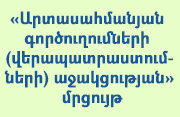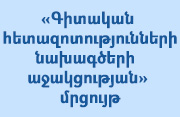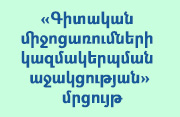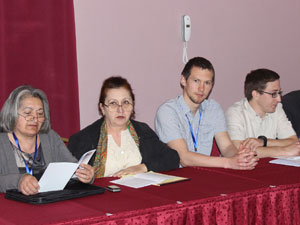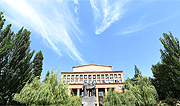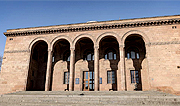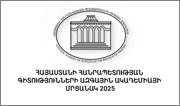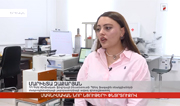The Institute of Geophysical Engineering Seismology of NAS RA has studied the dependence of the formation of seismic precursors formation on the mechanism of the expected strong earthquakes focus.
Mariam Mkrtchyan, the head of the research, a senior researcher at the Seismology and Earthquake Prediction Laboratory, explains: "In our studies we have used the well-known fact that in the period preceding expected strong (M≥6.0) earthquakes, periodic fluctuations of weak seismicity can be observed, the fluctuations are detected in the focus zone of the expected earthquake during 3-5 years, reaching a maximum before 0.6-1.8 years.
Aiming to study the anomalous regime of weak seismicity in the focus zone of the expected strong earthquake, we have conducted a retrospective analysis of the seismic situation prior to a number of strong earthquakes in the highlands of Armenia and the adjacent regions. We have carried out the localization of the expected strong earthquake focus zone formation according to the spatial-temporal picture of the epicenters of the previous weak earthquakes on the base of the peculiarities of the background seismicity. A significant characteristic of background seismicity has been confirmed: over time the epicenters of weak earthquakes are exposed to migration to the expected strong earthquake focus zone. A process of grouping and centralization takes place. Being a feature of strong earthquakes this phenomenon is manifested in a wide range of energy levels of weak earthquakes".
Weak or foreshock earthquakes preceding a strong earthquake are combined with creep phenomena (landslides) along the fault. They can be considered as seismic forerunners in the solving of earthquake prediction problems. This regularity was confirmed in the Parkfield area of the USA, on the territory of the San Andreas fault.
However, earthquakes often occur, the formation mechanism of which is not related to creep phenomena and when seismicity background activation as foreshocks is not observed. The catastrophic earthquake in Spitak in Armenia in 1988 was of that kind. It did not have a series of foreshock earthquakes, only two foreshocks took place (one of them - very weak, the other with M = 3 magnitude) 16 hours before the strong shock. Data of other geophysical fields of the area before this earthquake did not allow the detection of any significant anomaly that could be considered a forerunner. Certain atmospheric-biological forerunners were observed, but they did not show an unambiguous connection with this earthquake.
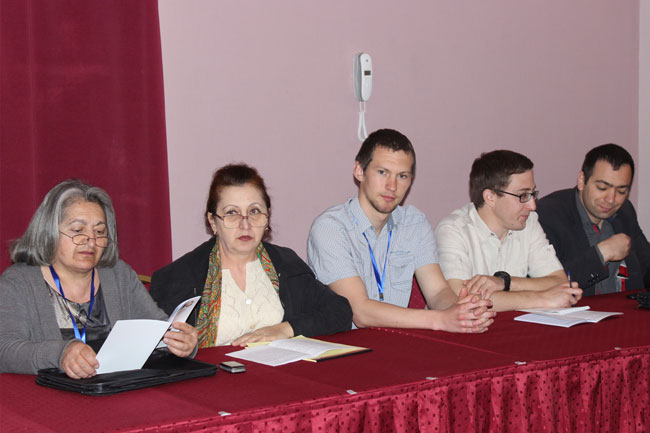
These peculiarities have been used to study the characteristics of physical processes occurring in expected strong earthquake focuses by comparing them with the parameters of earthquake focus mechanisms.
"It turns out that when the type of mechanism of an expected strong earthquake is an upthrow fault or an overfaultt, especially in the zone of high pressure and in the conditions of a sharp drop of the fracture plane - ≥60o, weak seismic activity is either absent or very weak, for example Spitak focus zone. In the case of a type of a strike-slip mechanism, when creep shifts occur in the tectonic seam of the fault system, seismicity is activated in the form and regularities of spatial-temporal distribution specific to weak earthquakes, for example, during the strong Van earthquakes of 1976 and 2011 in the Anatolian fault zone. Thus, the comparison of earthquake data with the parameters of the focus mechanisms and further analysis show that in the perception of the expected strong earthquake focuses formation it is often necessary to take into account the specifics of seismogenic zones, fault zones of the Earth crust," said Mariam Mkrtchyan.
The research was carried out within the framework of thematic-basic financing programs in the Department of Seismology of the Institute of Geophysics and Engineering Seismology after A.Nazarov of NAS RA.
The main results of the work were reported at the conferences: "Problems of Geocosmos" (St. Petersburg) and "Spitak Earthquake. 30 Years Later. Experience and Perspectives" (Yerevan). An offer was received to submit the article to the "Universal Journal of Geoscience".



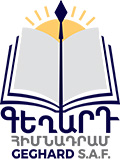
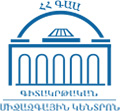









![academy [@] sci.am academy [@] sci.am](images/email.jpg)










